Definitions for those Starting to Explore the Night Sky
Common Abbreviations and Acroymns
Annotated Definitions
Absolute Magnitude. The “standardized” magnitude of a star used to compare the actual side-by-side magnitude of stars. It is the magnitude of any star placed 32.6 light years (10 parsecs) from Earth. Since all the stars in the sky are at different distances, their magnitudes are relative because closer stars will usually be brighter than those farther away. The absolute magnitude of the Sun is a “faint” +4.82.
Achromat.
A type of a lens that is often used on less expensive refractor telescopes, however, it can provide excellent imagery as long as the focal length is f/10 or longer (10 times the diameter of the lens). It consists of two elements that increases color quality over a single element. It was the first significant improvement in the refractor telescope, from the early 1700s, and is still used today.
Altitude & Azimuth. A system of coordinates for determining position in the sky. Altitude refers to the vertical height of an object above the horizon and is expressed in arc degrees, ranging from 0° at the horizon to 90° at the zenith (the top of the sky for an observer). Azimuth is the horizontal component and starts with 0° at true North and arcs eastwardly, through 360° of the compass. An object in the sky can have different
altitudes and azimuths for observers at different locations on Earth.
Altazimuth Mount (Abbreviations: alt-az or altaz). A mount that moves vertically straight up and down and can swivel horizontally to any cardinal point in the sky. Binoculars at tourist attractions use alt-az mounts and many telescopes use this type of mount. Almost all
telescopes at professional observatories use this type of mount because they are less massive and thus less costly than equatorial mounts.
Apochromat . A type of lens used ias the objective in refractor telescopes that consists of either three element together or two sets of two elements (total of 4 elements). Apochromats provide excellent imagery and are the most expensive refractor telescopes.
Arc Degree (°). Unit of angular measurement used in astronomy. One arc degree is the same as one compass point degree. There are 360 arc degrees in a circle; each arc degree is divided into 60 arc minutes; and each arc minute is divided into 60 arc seconds. Arc seconds are further subdivided into tenths. The word “arc” is usually omitted when using this measurement system, which can cause confusion when minutes (referring to clock time) are used in the same dialogue as arc minutes or seconds. The Sun and Moon are both about 1/2 of an arc degree
(30 arc minutes or 1,800 arc seconds) in angular diameter. Declination is expressed using arc degrees. Notation example: 6° 26' 3.2"
Arc Minute ('). 1/60 of an arc degree. The Moon is about 30 arc minutes in diameter or 1/2 an arc degree.
Arc Second ("). 1/3,600 of an arc degree or 1/60 of an arc minute. Because of atmospheric turbulence, which is always present, the smallest detail that is possible to see through amateur telescopes on Earth is 1/2" (0.5") which can be achieved with a telescope having a diameter as little as
8 inches.
Asterism. A recognizable, patterned or otherwise distinguished group of stars, that is not a constellation. Some asterisms are a subgroup of a constellation. The Big Dipper is technically an asterism of the constellation Ursa Major. There are asterisms that are “small” and can only be seen with binoculars or a telescope, like the Coathanger cluster in the constellation Vulpecula.
Asteroid. The asteroids are billions of “small” rocky objects that orbit between Mars and Jupiter. They are also known as the Minor Planets and represent leftover material (debris) from when the solar system formed 4.6 billion years ago. The gravitational influence of Jupiter has played a roll in its location. The largest asteroid and first discovered is Ceres with a diameter of 594 miles and it is the only asteroid that is spherical in shape. It is also classified as a dwarf planet. When Ceres was discovered in 1801, it was called a planet (the same thing happened with Pluto) but by the mid-1800s, after many more were discovered, and found to be small and orbiting in the same “belt,” they were declared to be asteroids and not planets. The main asteroid belt extends from just outside Mars’ orbit to about halfway to Jupiter, that is, 1.7 to 3.5 Astronomical Units from the Sun, with some clumps that are as far out as Jupiter’s orbit. The total mass is estimated at 3% of the Moon’s and the total volume three-fourths the diameter of the Moon. The four largest asteroids, Ceres, Pallas, Vesta and Hygiea account for about half of the total mass of all the asteroids. There are billions, if not a trillion or so small ones, individual asteroids.
Astronomical Unit (AU). The average distance from the center
of the Sun to the center of the Earth. This distance has been defined as exactly 149,597,870,700 meters, which equates to 92,955,807 miles. The Earth and all the planets have orbits that are the shape of an ellipse and not a circle, so their distances from the Sun vary throughout the course of a revolution.
Autumnal Equinox. The 180° point on the ecliptic (The zero point in the Vernal Equinox which is in the constellation of Pisces. When the Sun is at this position, about September 22, it is the start of Autumn in the northern hemisphere.
Averted Vision. “Looking” at something peripherly, that is, using the outskirts or edge of your vision, instead of looking at it directly. At nighttime, the advantage of using averted vision is that very faint objects, like faint stars, nebulae and galaxies can often be seen (glimpsed) with averted version than when looking directly at them. Literally, very faint objects in the center of an eyepiece will be invisible if looked at directly. The disadvantages of using averted vision is strain on the eye and poor focus. The center of our eyes have fewer light receptors than other parts of the eye because the centers contain the bundle of “wiring” that transmits imagery to the brain.
Azimuth. See Altitude & Azimuth.
Barlow “Eyepiece”. See Telescope Magnification, and picture to the right.
Bayer Letters. The formal name of the Greek or Roman letters,
assigned, for identification purposes, to stars by Johann Bayer (1572–1625), a German astronomer, in his 1603 star atlas, Uranometria. This nomenclature is still used today. He first assigned lowercase Greek letters to the brightest stars in each constellation. Usually, but not always, the brightest star received the letter alpha (a), the second brightest, beta (b) and so on. If, in a constellation, he exhausted the lowercase Greek letters, he continued with the lowercase Roman letters and then the uppercase Roman letters. The “highest” letter used is a capital Q and this occurs in three constellations: Centaurus, Puppis and Vela. So, Bayer letters are Greek letters and Roman letters up to capital Q. In the early 19th century, the practice arose to use the “remaining” capital letters, R through Z, followed by double Roman capital letters, to designate variable stars within each constellation. Of course, this does cause confusion between Bayer letter and variable star designations. It would have been better if single Roman capital letters had never been used to identify variable stars. See Genitive and Variable Star.
Caldwell Objects. A list of 109 deep sky objects compiled by Patrick Moore of England in 1998 that has become popular for amateurs to
observe. It includes objects visible from the northern and southern hemispheres.
Celestial Coordinates. Right Ascension and Declination, analogous to longitude and latitude, respectively, are used for determining coordinates of celestial objects. The lines of Right Ascension, similar to longitude, pass through the celestial poles but with divisions based on the 24 hours of a sidereal day, which is 4 minutes shorter than our “regular” clock-time day. The sidereal day is the length of time it takes for one
complete revolution of the stars in the sky (which is the same as one complete rotation of the Earth on its axis). Like clock time, each sidereal hour is divided into 60 minutes and each minute into 60 seconds. The line for zero hour (0h) passes through the vernal equinox which is where the ecliptic intercepts the celestial equator, a point “located” in the constellation Pisces. Examples of Right Ascension are 16h 23.7m and
1h 14m 23s. The abbreviations for Right Ascension are RA and a . Declination is just like latitude except that + and – are used in place of N and S. The projection of Earth’s equator onto the celestial sphere becomes the celestial equator and has a declination of 0°. The North Celestial Pole has the declination, +90° and the South Celestial Pole, –90°. Examples of Declination are, +19° 55' 35" and –35° 05.4' . The abbreviations for Declination are Dec and d .
When writing celestial coordinates, Right Ascension is always
expressed before Declination. Example: 5h 06m 11s, +48° 16' 45" .
Celestial Equator. A great circle that is the projection of the Earth’s equator onto the sky. The celestial equator has declination 0°, corresponding to a latitude of 0°.
Celestial Horizon. The meeting of the sky and Earth. At sea, the
celestial horizon is where the sky and water meet, so it is unobstructed.
Celestial Meridian. A great circle that divides the sky into eastern and western halves. This circle passes through the observer’s zenith and the North and South Celestial Poles. In the northern hemisphere, celestial objects are at their highest in the sky when they are on the local
celestial meridian, that is, on the line starting from the North Celestial Pole, passing through the zenith and on to the the South Celestial Pole.
Celestial Pole. See either North Celestial Pole or South Celestial Pole.
Celestial Sphere. At one time, it was thought that the Sun, Moon, planets, comets and stars resided on a giant sphere called the celestial sphere. Today, this is a convenient term to indicate the visible globe of stars that surrounds us. In essence, it is the “canvas” on which the
Universe is drawn.
Circumpolar Stars. For any location on Earth, the circumpolar stars are the set of stars that never dip below the horizon, so they are always visible in the night sky. For locations on Earth other than the poles and equator, the circumpolar stars are all those stars that can be placed between the celestial pole and horizon. At the North and South Poles, all the stars in the sky are circumpolar. At the equator, none of the stars in the sky are circumpolar.
Clarity. See Moments of Clarity.
Cluster (of stars) or Open Cluster. Anywhere from a dozen to several thousand stars that were born together, from the same nebula, and reside in close proximity to one another. This type of cluster is often called an Open Cluster because it has relatively few stars and is “open” compared to Globular Clusters. Sometimes Open Clusters are referred to as Galactic Clusters when they are found on or near the galactic plane or Milky Way Band. Open Clusters are considered Deep Sky Objects. The Pleiades (M45) in Taurus is the best example of a naked-eye cluster of stars but telescope favorites include M6, M7, M11, M34, M35, M36, M37, M38, M41, M44, M46, M47, M67, M93, and the Double Cluster. Also see Globular Cluster.
Comet. An iceberg-type celestial body composed of water ice and other icy elements as well as some rocky-type materials. When they have orbits that bring them closer to the Sun than Jupiter, the ices turn to vapor forming a cloud engulfing the comet’s body, which is then called the coma, and develop tenuous tails spewing behind. Comets are sometimes referred to as “dirty snowballs.” A celestial body that comes close to the Sun but does not form a coma or tail would be called an “asteroid.”
Conjunction. A visual “alignment” between our planets, Moon, Sun or a bright star. A conjunction occurs when two or more of these bodies are in close proximity to one other in the sky. Usually this involves just two of these objects but sometimes more. There is no scientific significance to conjunctions but they are often pretty sights to behold. For example, it is beautiful to see the bright planet Venus near a crescent Moon. Conjunctions are most common with the Moon and a planet because the Moon orbits the Earth in one month’s time and passes “close by” to all the planets during this interval. Remember, all the planets, Moon and Sun orbit in nearly the same plane, so they all move and appear on or near the ecliptic, thus coming close to one another “frequently.” In May of 2002, all five of the visible planets were in the same area of the sky. It is exceedingly rare for two planets to “merge” together in the sky. One such incident happened to Venus and Jupiter in 2 BC, lending speculation that this might have been the Star of Bethlehem.
Constellation. A group of visible stars that has been assigned a name (mostly by the Greeks). The stars in a constellation usually form a pattern that aid in their recognition. The visible stars were first grouped into constellations thousands of years ago and are associated with lore. Today, the constellations are not just named groups of stars, but also include a specific bounded area of the sky around the stars. There are a total of 88 constellations.
Dark Adaptation. The ability of the eyes to adjust and become more sensitive to low levels of light in the dark. The eyes start to adapt to low levels of light in the dark in as little as a few minutes but with a deeper adaptation taking 10 to 20 minutes. The use of dim red lights, like red-light flashlights, do not markedly interfere with dark-adapted eyes.
Dark Nebula. A nebula that is unlit by nearby stars, so it appears dark or as a silhouette because it is blocking light behind it. The Horsehead Nebula (in Orion) and Coalsack (in Crux) are well-know examples.
Declination (Dec or 𝜹). See Celestial Coordinates.
Deep Sky Object (DSO). A deep sky object is any non-stellar object that is outside our solar system. The planets, comets and asteroids are not deep sky objects. Individual stars, double stars and variable stars are not deep sky objects. The deep sky objects are clusters of stars, globular clusters, any form of nebulae including planetary nebulae and supernovae remnants, and galaxies. The term, deep sky object, connotes objects that are distant and faint, however, many deep sky objects are “bright” and span a large area of the sky. The Andromeda Galaxy (M31), for example, spans more than six Moon diameters and can be seen with the naked eyes. The best known catalogues of DSOs are the Messier catalogue of over 100 objects and the New General Catalogue listing over 13,000 objects. Except for galaxies, all of the deep sky objects reside within or are “attached” to our Milky Way Galaxy. All galaxies are far
beyond and outside our Milky Way Galaxy.
Dobsonian Telescope (Dob). See also Telescope. But, a Dobsonian is a Newtonian reflector on a simple altitude-azimuth mount.
Dog Star and Dog Days of Summer.
Sirius is known as the Dog Star and the phrases, Dog Days or Dog Days of Summer are very old, having been used by the ancient Greek and Roman civilizations. During the summer months in the northern hemisphere, Sirius, the brightest star in the night sky, is near the Sun during July and August. In ancient days, it was believed that Sirius contributed to the higher temperatures experienced during these months.
Double Stars. A double star is two or more stars that are very close together and “casually” look like one star. Double stars can usually be “split” or separated into distinct stars by using a telescope with sufficient magnification (from 6x to 300x). Most double stars are binary stars, that is, stars that orbit about each other. Over half of the stars we observe in the night sky are binary stars but most cannot be separated with regular telescopes because the stars are too close together. Castor in Gemini
and Albireo in Cygnus are two favorite binary double stars. Optical
doubles are double stars that look close together because they just happen to be in the same line of sight. An example is Algedi in Capricornus. There are many catalogues of double stars and F. G. W. Struve’s (1793–1864) is one of the most famous. Today, the Washington Double Star Catalogue, available online, is the most complete and definitive source of double stars. Since most double stars are binary stars, they have orbits with periods anywhere from a few dozen to hundreds or even thousands of years.
DSO. Abbreviation for Deep Sky Object. See Deep Sky Object.
Dwarf Planet. A celestial body orbiting the Sun that is spherical in shape, but neither a planet nor a moon, and is part of a debris field. The asteroid Ceres, and the Kuiper-belt-object Pluto, are dwarf planets.
Eclipse. An event where a closer celestial body moves in front of and completely covers a celestial body that is farther away. Usually, the two bodies have similar angular sizes. The best example is a total solar eclipse, where the Moon moves in front of and completely covers the Sun. When the foreground body’s angular size is much, much larger than the distant object, it is usually referred to as an occultation.
Ecliptic. If you could see the stars around the Sun, you would easily notice that the Sun slowly moves eastwardly (about 1° a day) through the fixed positions of the stars in the constellations. And, over the course of a year, the Sun completes a closed circle in the sky, and this circle is called the ecliptic. The ecliptic is known as a Great Circle that passes through the 12 constellations of the Zodiac. The movement of the Sun through the constellations is an illusion created from the Earth orbiting the Sun. See Zodiac.
Emission Nebula. See Nebula.
Equatorial Telescope Mount. A traditional telescope mount that has two perpendicular axes, one which points to a celestial pole and can allow telescopes to “follow” celestial objects. A form of this mount can be recognized by the use of counter-balancing weights opposite the telescope. The polar axis points directly to the north or south celestial pole and allows east to west movement of the telescope in Right Ascension. The perpendicular Declination axis allows north and south movement. Although this type of mount is still used by amateurs for long-exposure astrophotography, these mounts have been largely abandoned at professional observatories for less massive, computer controlled, altazimuth mounts. A popular “configuration” of this mount is called the German Equatorial Mount (GEM)—see picture to the right.
Equinox. See Vernal Equinox or Autumnal Equinox.
Eyepiece. An optical lens or lenses that is looked through to see images in binoculars or a telescope. The two eyepieces in binoculars are usually the smaller diameter lenses at the back and are an integral part of the system. However, telescope eyepieces are separate optical components, housed in their own metal barrels, usually having a diameter of 1.25 inches. Telescope eyepieces are inserted into a focuser. Generally, a set of two or more eyepieces are used with a telescope in order to change the magnification. An eyepiece is described by its optical design and focal length. The optical design determines its characteristic, one such characteristic being the field-of-view or size of the “window” that is available when looking through the eyepiece. Generally, eyepieces that provide wider fields-of-view are more expensive. The standard eyepiece design is called a Plössl and is an excellent, lower-cost, eyepiece design. The focal length of an eyepiece, which is usually inscribed on its top or side, is expressed in millimeters and determines the magnification of a telescope. Focal lengths range from 1 to 55 or more millimeters (abbreviated mm). Eyepieces with shorter focal lengths provide higher magnifications. The magnification of a telescope is calculated by dividing the focal length of the eyepiece into the focal length of the telescope. A telescope with a focal length of 2,000mm will yield magnifications of 400x, 133x, and 50x with eyepieces of focal lengths 5mm, 15mm and 40mm, respectively. Magnifications from 50x to 300x are the most useful. See Field-of-View.
Falling Star. Common name for a meteor. See Meteor.
Field-of-View. Field-of-view is the size of the “window” that an eyepiece provides when looking through it and is dependent on the optical design of the eyepiece. Also, the greater the magnification an eyepiece provides, the smaller the field-of-view. The standard eyepiece design is called a Plössl. This is an excellent eyepiece and provides a generous field-of-view. Any Plössl eyepiece that provides a magnification of 50x will also provide a field-of-view of
1 arc degree in diameter, which is equivalent to two Moon diameters. Any Plössl that provides a magnification of 100x will also provide a field-of-view of 1/2 an arc degree, which is the same area as a Full Moon. There are eyepieces with different optical designs that provide greater fields-of-view than the Plössl but they are more expensive. See Eyepiece.
Finder or Finderscope
. A device, usually optical in nature, attached to the telescope tube that makes it easier to point or aim a telescope. It is very difficult to point a telescope to anything in the night sky unless you have a finder (it is difficult to even point to the Moon). In the past, a finder was a finderscope or small telescope that provided low magnification, usually around 3x to 6x. Today, most finders are reflex-sight
devices that projects a dot or bullseye onto the night sky (it is actually
reflected to the eye off a piece of glass). See picture of refractor to right and also see Telrad.
Flamsteed, John (1646–1719). An English astronomer who was appointed as the first Astronomer Royal of the Old Greenwich Observatory just outside London (where 0° longitude starts). He measured the position of a few thousand stars and designated them with numbers
instead of letters. See Flamsteed Numbers and Bayer Letters.
Flamsteed Numbers. Numbers, to serve as designations, assigned to naked-eye stars, by constellation, in order of Right Ascension. The numbering starts anew with each constellation. A total of 2,554 stars have been assigned Flamsteed numbers. Flamsteed numbers designate more stars than the Bayer letters and are used in most celestial atlases, however, there are no Flamsteed numbers for the stars “deep” in the southern hemisphere because John Flamsteed worked exclusively from London in the late 1600s. All stars with Bayer letters have a Flamsteed number designation. The Flamsteed numbers were not assigned with absolute consistently. There are
instances where fainter stars are numbered but nearby brighter stars are not. See Genitive.
Galactic Center. The point on the celestial sphere that is the direction to the center of our Milky Way Galaxy. This point is in the constellation Sagittarius and is the 0° mark for the Galactic Equator, which is the Great Circle that passes through the middle of the Milky Way Band. A giant black hole resides at the center of our galaxy.
Galactic Cluster. See Cluster.
Galactic Equator. A great circle that passes through the middle of the Milky Way Band and represents the orientation of the plane of our Milky Way Galaxy.
Galaxies and their Types.
If you held the Universe in your hands, it would be ball-shaped and composed of billions of tiny fuzzy specks. Each speck would be a galaxy, the basic grouping in the Universe and each representing a collection of billions to a trillion stars that are gravitationally bound together. The shapes of galaxies are generally roundish, being either flattish like a dish or
dimensional like a ball. All galaxies lie outside our Milky Way Galaxy, the majority at distances of millions to billions of light years. It is estimated that there are 225,000,000,000 (225 billion) galaxies in the Universe. The sizes of galaxies range from about 500 to 500,000 light years in length or diameter. Galaxies are clumped into clusters which are part of larger superclusters that stretch through the Universe. (Our Milky Way Galaxy belongs to a small group of about 50 galaxies that is called the Local Group. The
Andromeda Galaxy (M31) and the Pinwheel Galaxy (M33), are part of the Local Group). Galaxies in a cluster are gravitationally bound to one
another. As a whole, galaxies in the Universe are distributed along interconnected strands, creating a network that looks somewhat like a sponge, where the holes represent areas devoid of galaxies.
Galaxies are generally classified by their shape, but also their size. There are three major shapes: spiral, elliptical and irregular—see pictures to the right. Spiral galaxies are by far the most common and account for about 60% to 80% or so of all galaxies. They are the most distinctive looking galaxies, having several curved arms radiating from bulged centers or nuclei. Spiral galaxies are larger on average and are shaped like a dish. Their distinctiveness comes from the fact that they have bright nuclei with prominent and bright curved arms. About 20% of all spiral galaxies are called “barred” spirals because they have what looks like a straight arm or “bar” passing through an elongated nucleus. The curved arms then radiate off the ends of the bar. The smallest and largest galaxies are E
lliptical. They resemble balls or elongated balls. The stars in these galaxies revolve around their centers or nuclei every which way, much like bees around their hives. Ellipticals are the result of spiral galaxies that have merged together. Finally the remaining 5% of galaxies are called Irregular because they are irregularly shaped with “mixed-up” insides. These galaxies appear to be either the result of the collision of galaxies or represent a galaxy being gravitationally contorted by another nearby galaxy. There are many very small “Dwarf” galaxies that are either irregular or somewhat elliptical in shape.
Data suggest that most, if not all galaxies, have giant black holes at the center of their nuclei.
Galaxy Cluster. In the universe, galaxies are clumped together in groups or clusters. The galaxies in each cluster are all gravitationally bound to one other. There can be anywhere from about 10 to 1,000 or more galaxies in a cluster. Our Milky Way Galaxy is in a cluster that is called the Local Group and consists of about 50 galaxies. The Virgo
Cluster of Galaxies contains up to 2,000 galaxies. Clusters of galaxies form larger groupings called superclusters.
GEM. German Equatorial Mount. See Equatorial Telescope Mount and refractor telescope picture to the right—above the pictures of the galaxies.
Genitive or Latin Genitive (form of constellation names). Genitive refers to a grammatical case resulting in a spelling variation of a word that indicates or implies a relationship of possession. Genitives are not used in modern English. Where they exist, they are a holdover from Latin and other languages. Genitives of the constellations are still used today in conjunction with the Bayer letters, Flamsteed numbers or other designation to identify stars. For example, the “alpha” star in Orion, as assigned by Bayer, but best known as Betelgeuse, could also be referred to as a (alpha) Orionis, where Orionis is the genitive form of Orion, indicating possession of the alpha star. Betelgeuse can also be indicated as
58 Orionis when referring to it by its Flamsteed number. Most of us have heard of Alpha Centauri, one of the closest stars to us. This is its gentitive name using its Bayer letter. This star is also commonly called by its name, Rigel Kentaurus.
Genitive Names of all the Constellations
Globular Cluster. This deep sky object is a closely packed group of 10,000 to a million or so stars, held together by their mutual gravity and resembling a fuzzy ball. Globular clusters are not elliptical galaxies, but are gravitationally attached to galaxies. It is estimated that there are about 150 of them around our Milky Way Galaxy, almost all outside the plane and surrounding the galactic nucleus (hence, there are many in the area of Sagittarius and Scorpius). Some of the globular clusters that surround the Andromeda Galaxy are visible with larger amateur telescopes. The stars in globular clusters are old stars which means that they are poor in heavier elements, like metals. Globular clusters are as old as galaxies and probably formed along with them.
How do you tell the difference between a globular cluster and elliptical galaxy? Both objects have similar shapes but the elliptical galaxies are much fainter and gossamier in appearance and it is impossible to see individual stars in elliptical galaxies. See picture to the right.
GOTO or GO TO Telescope. “GO TO” actually refers to the capability of a telescope mount and not the telescope. A GO TO mount is a
computer-motorized mount, that once properly set up, by aligning to a star(s), will automatically move (GO TO) and then track any celestial
object selected through a hand controller. See picture to the right.
Great Circle. Any circle on the celestial sphere that divides it into equal halves. The celestial equator is a great circle. Any circle that passes through both celestial poles is a great circle. A great circle is the largest circle that can be drawn in the sky.
Greek Alphabet or Letters. There are 24 letters that make up the Greek alphabet and their lowercase form were the first set of symbols used by Bayer in 1603 to designate the brightest stars in constellations. See Bayer Letters.
Halley’s Comet. A most famous comet because it is large, bright and returns regularly—about every 76 years. Its next appearance will be
mid-2061. Halley’s solid core, which resembles a potato, is composed of various ices and measures about 9.5 x 6 miles. However, its water-vapor tail, which develops when it gets close to the Sun, can reach millions of miles. Its highly long, elliptical orbit stretches from Mercury to Neptune. This comet was named in honor of Sir Edmond Halley (1656–1742) after he correctly deduced that it was the same comet that had appeared three times previously. Although he saw the comet’s 1682 appearance, he did not see his prediction come true with its return in 1758.
Kuiper Belt. A belt of icy-type celestial bodies whose orbits start
immediately after Neptune. This belt is analogous to the asteroid belt between Mars and Jupiter. Pluto is one of the largest Kuiper Belt objects. Both the Kuiper Belt and Asteroid Belt represent leftover material from when our solar system formed 4.6 billion years ago. The asteroid belt represents rocky-type material whereas the Kuiper Belt represents
icy-type bodies (with rocky-type material mixed in). The Kuiper Belt
extends from about 30 to 50 astronomical units from the Sun and is more massive than the asteroid belt by a factor of 20 to 200. Gerard Kuiper was an American astronomer, originally from the Netherlands, who postulated this outer debris field.
Large Magellanic Cloud (LMC). See Magellanic Clouds.
Latin Genitive. See Genitive.
Lens. Lens is the term often used by the general public to refer to an EYEPIECE. Eyepieces are used to change the magnification of the telescope. However, eyepieces ARE NOT called lenses (or lens, if singular).
Light Year (ly). Unit of length in astronomy. One light year is the distance light travels in one year. Since light travels at the rate of 186,282 miles per second, it will travel approximately 6 trillion miles (5,880,000,000,000 miles) in one year’s time. It takes light 1.3 seconds to travel the distance from the Earth to the Moon and 8.3 minutes to travel from the Sun to the Earth. Our solar system to Neptune is about 8.3 light hours in diameter and the nearest star is about 4 light years away.
Local Group. A group of about 50 gravitationally-bound galaxies that includes our Milky Way Galaxy, the Andromeda Galaxy and the Magellanic Clouds. Our Milky Way Galaxy and the Andromeda Galaxy are the largest members and the groups center-of-gravity lies somewhere
between them. Most of the Local Group galaxies are very small dwarf galaxies and some are satellite galaxies of either the Milky Way Galaxy or Andromeda Galaxy. Galaxies are gravitationally clumped together in groups throughout the Universe.
M (plus number). See Messier Object.
Magellanic Clouds. Two distinct and detached “patches” of the Milky Way Band that are visible mostly from the Southern Hemisphere. These patches are small galaxies that are very close and gravitationally bound to our Milky Way Galaxy. Both galaxies are classified as Irregular Dwarf galaxies. They are designated as the Large Magellanic Cloud (LMC) and the Small Magellanic Cloud (SMC) with the SMC also having the NGC designation of 292. The LMC is 160,000 ly away and its greatest length is 14,000 ly. The SMC is 200,000 ly away and its greatest length is 7,000 ly. The LMC and SMC were the closest known galaxies to our Milky Way Galaxy until the discovery of the very tenuous Canis Major Dwarf Galaxy in 2003, which is about
25,000 ly distant. The LMC and SMC were named after the efforts of the
Portuguese explorer, Ferdinand Magellan, to circumnavigate the world in 1519. He had a journal entry indicating his observation of the LMC.
Magnification. See Telescope Magnification.
Magnitude. The stars are classified by brightness using a system
of magnitudes originating in ancient times. For stars that we can see
with our eyes, the scale ranges from a bright magnitude –12 (for
Sirius) to the faint naked-eye limit of +6. Venus can be as bright as magnitude –42. The Sun has a magnitude of –27 while the Hubble Space Telescope can record to magnitudes fainter than +30. Each magnitude is about 22 times brighter or fainter than the next magnitude. Under very dark skies, a telescope with a diameter of 4 inches allows stars down to magnitude +11.8 to be visually observed, to magnitude +12.7 for a 6-inch, +13.3 for an 8-inch and +14.2 for a 12-inch.
Meridian. See Celestial Meridian.
Messier, Charles (1730–1817). A French Parisian observational
astronomer who had a passion for hunting comets but is best known for his little catalogue listing over 100 of the biggest and brightest deep sky objects visible from the northern hemisphere. Read more
about
Messier here
.
Messier Marathon. The act of viewing every Messier object, except for possibly M74 and/or M30, in one night. This can be accomplished only around New Moon during the month of March because it is the time of the year when the nights are still long and the Sun is positioned in a portion of the sky devoid of Messier objects. This is a dust to dawn event!
It is possible to see all of the objects but the hardest to catch is often M30
because it rides the early dawn light.
More on the Marathon.
Messier Object. Any of the over 100 deep sky objects catalogued or known by the French astronomer, Charles Messier in the late 1700s. This list of objects represents the biggest and brightest that can be seen from the mid-latitudes of the northern hemisphere. Their designations begin with an “M” and are bolded on the charts.
List of the Messier objects
.
Meteor. The light trail or streak in the sky created when a meteoroid enters Earth’s atmosphere. It is commonly called a shooting or falling star. These trails are most often generated from meteoroids the size of grains of sand—often debris from the wake of comets that have passed close to the Sun. A “rock” in space is called a meteoroid. As it burns through our atmosphere, it is called a meteor. A rock from space found on the ground it called a meteorite.
Milky Way or Milky Way Band. An irregularly shaped, hazy, cloudy or milky band that circles the celestial sphere. This band is a permanent part of the sky and has an average width of five arc degrees (10 Moon
diameters). The Milky Way Band is impossible to see in larger cities
because of light pollution, however, it is prominent in dark skies. Its
appearance is milky because it is composed of the faint glow from countless faraway stars—the bulk of the stars in our galaxy. With a telescope or binoculars, one can see that there are many more stars in the region of the Milky Way Band than in other areas of the sky. Our galaxy took on the name of this band after it was realized that the Milky Way Band is our galaxy—the galaxy where our Sun resides. It is not possible to see through the thickest parts of the Milky Way Band, so there may be
several companion galaxies to our Milky Way Galaxy and more globular clusters hidden by its structure.
Milky Way Galaxy. The name of the galaxy where we and our Sun
reside. Our galaxy is a spiral galaxy having a slight bar emanating from its center. It contains several hundred (200 to 500) billion stars and has a “visual” diameter ranging from 100,000 ly to 120,000 ly or so with a thickness of 2,000 ly. The Milky Way Band represents the faint glow from the bulk of the stars that make up our galaxy.
Minor Planet. Another name for the asteroids that orbit between Mars and Jupiter. See Asteroids.
Mirror-
Reverse Image. An image that has left and right reversed but maintains the correct vertical orientation. This is the image seen in mirrors. Refractors and Schmidt-Cassegrain Telescopes that use 90°
diagonals for comfortable visual observing have mirror-reverse imagery. The biggest drawback to this type of imagery is the difficulty it presents when trying to correspond stars in the scope with those printed on charts with the “correct” orientation.
Moments of Clarity. The atmosphere is usually turbulent and this often causes images in the telescope to be blurry, especially those of the planets, Moon and Sun. Moments of clarity, which last a second or so, are frequent occurrences when the sky is momentarily steady and details of a planetary surface (or other celestial detail) can be glimpsed.
NGC (plus number). See New General Catalogue of Nebulae and Star Clusters.
Nadir. The point directly below an observer. We each have our own nadir. Opposite is the zenith, the point directly above our head.
Nebula (plural: nebulae). The word nebula is a general term referring to various types of gaseous clouds, composed mostly of hydrogen. All of the nebulae visible in the night sky are located in our Milky Way Galaxy.
There are three basic types of nebulae: star-bearing, planetary
nebulae and supernova remnants.
Star-bearing nebulae represent birthing places of stars. They are very large in size, spanning 150 light years or more. Two well-known examples are the Orion and Lagoon nebulae. The Eta Carinae nebula is the very largest in the sky and spans 460 ly. Because star-bearing nebulae give birth to stars, they often have imbedded clusters. The Trapezium, in the Orion Nebula, is one such example. Often, the young and hot stars born in these nebulae stimulate the surrounding hydrogen gas to emit its own light, pinkish in color. On occasion, it is possible to see the pinkish cast of the Orion Nebula through a small telescope.
A nebula that is stimulated to give off its own pinkish light is called an Emission nebula. If a nebula is illuminated by reflected light from nearby stars, producing a bluish glow, it is referred to as a Reflection nebula. Star-bearing nebulae can often have a combination of both emission and reflection nebulae. Although Emission and Reflection nebulae are considered Bright nebulae, the term Bright can be given to nebulae when it is unclear how they are illuminated. A Dark nebulae is any type of unlit nebulae that blocks the light from behind it. The best-known examples of these silhouettes are the Horsehead Nebula in Orion and the Coalsack in Crux.
Planetary nebulae (the name has nothing to do with the planets, it’s just an old name that stuck because many of these nebulae look like small round disks) represent the remains of outer atmospheres shed from some stars in their death throes. These nebulae are spherical, ringed or have diametrically opposed lobes depending on magnetic fields generated by the dying stars. They can expand to diameters of a few light years or more. There is not enough material in this kind of nebula to give birth to another star. Two of the best known and easiest to observe planetary nebulae are the Ring Nebula (M57) and Dumbbell Nebula (M27). Planetary nebulae are the only nebulae that can show distinct color when observing with a telescope.
Supernova remnants are nebulae created from the explosions
of very large stars at the end of their lives. They can expand to diameters up to several light years. There is not enough material in this kind
of nebula to give birth to another star but if it intermingles with a star-bearing nebula, it will provide metals and heavier elements to an emerging solar system. The Crab Nebula (M1), in Taurus, is the easiest supernova remnant to observe. Although a supernova is a rare occurrence, several supernova remnants dot the sky, some extending for many degrees, but most are photographic objects.
Neutron Star. A special type of star, that is, a stellar remnant, formed after an end-of-life supernova explosion of a large star, much more massive than our Sun. If the mass of the dying star is even larger, a black hole will form instead of a neutron star. A neutron star consists mostly of neutrons, the neutral component of the nucleus of atoms which are made up of protons and neutrons. Neutron stars are very small, having diameters around 15 miles and with masses around 300,000 times that of Earth. One teaspoon of a neutron star would weight about 6 billion tons. Neutron stars also rotate very rapidly, taking anywhere from several seconds to spinning hundreds of times per second. Depending on their orientation to Earth, they can appear as pulsars, that is, pulsating radio waves and X-rays synchronized to the period of their rotations.
New General Catalogue of Nebulae and Star Clusters (NGC). A catalogue listing of 7,840 deep sky objects published by J.L.E. Dreyer in 1888 that is still used today. The majority of NGC objects are galaxies and open clusters. Overall, NGC objects are much fainter than Messier objects but a “little” brighter than Dreyer’s supplemental list of 5,386 additional, IC objects (Index Catalogue of Nebulae and Star Clusters).
The IC catalogue is a huge addendum to the original NGC catalogue compiled by J.L.E. Dreyer and refers to two supplemental catalogues listing a total of 5,386 deep sky objects. In Dreyer’s IC catalogue, each object is identified with the letters IC followed by a number from 1 through 5,386. The first Index Catalogue, published in 1895, lists 1,529 objects and the Second Index Catalogue, published in 1908, lists 3,857 objects. The majority of IC objects are fainter than those listed in the NGC catalogue but there are bright and large objects in the IC catalogue that were overlooked when compiling the NGC catalogue.
NGC and IC numbers are assigned to objects in order of Right
Ascension, so these numbers increase from right to left.
The NGC and IC catalogues provide a very comprehensive listing of deep sky objects that can be seen with 15 to 20-inch diameter telescopes. This is an amazing accomplishment when you think that most of the
observations for these entries were made in the latter half of the 1800s.
North Celestial Pole (NCP). The projection of the North Polar Axis onto the celestial sphere. Earth’s northern axis points to this location in the sky. It appears as though all the stars in the sky rotate around this point. At this time, the bright star, Polaris (the North Star), is very close to the North Celestial Pole.
North Galactic Pole (NGP). Point on the celestial sphere that is perpendicular or 90° north of the Galactic Equator, which is the Great
Circle that passes through the center of the Milky Way Band. This point is noted on the charts and is located in the constellation Coma Berenices.
Open Cluster. See Cluster.
Parsec (abbreviation: pc). A unit of distance in astronomy equal to 3.26 light years. This length is based on the Astronomical Unit (the
average distance from the Earth to the Sun or 92,955,807 miles). An
Astronomical Unit would have to be moved 3.26 light years in distance for it to extend an arc angle of just 1 second in the sky (remember, there are 3,600 arc seconds in an arc degree). Mpc is the abbreviation for a
million (1,000,000) parsecs.
Planet. In ancient times, a planet was any celestial object, except for comets, that moved through the fixed constellation of stars. This included the Moon and Sun. The Greek definition of the word “planet” meant “wanderer” and this definition, although ambiguous, was pretty much used until it was redefined at the 2006 International Astronomical Union convention. The new definition of a planet must meet three criteria. One, it must orbit the Sun. Two, it must be large enough to assume a spherical shape, which is about a diameter of 500 miles. And, three, it must have cleared out the neighborhood about its orbit of debris. Ceres, the largest asteroid and Pluto, a large Kupier belt object do not meet the third criteria and so are known as dwarf planets.
Planetary Nebula. The shed “atmosphere” from a bloated star at the end of its life. Our Sun will create such a nebula at the end of its life 4 to 5 billion years from now. The word planetary nebula has nothing to do with the planets. It is an old term used to first describe these objects because they often resemble little disks. There is not enough gas in a planetary nebula to form another star. They often take on beautiful colors and forms. The original stars from most planetaries collapse to become a dense white dwarf star having a diameter about that of Earth. A favorite is the Ring Nebula (M57) in Lyra.
Planisphere. A two-piece round star chart with a “window” in the top piece. The top piece is turned about its center to show the stars, on the bottom piece, for any hour or day of the year. The word planisphere refers to a sphere of stars plotted on a flat surface or plane. They are handy reference charts for finding the constellations. See picture to the right.
Precession. The Earth wobbles on its axis because of tugs it receives from the Moon and Sun acting on its equatorial bulge. This is the same wobbling motion that is seen with a toy top as it slows down. Earth’s wobble is 46.8 arc degrees in diameter and takes about 26,000 years to complete. During this time, the north and south axes point to several different bright stars so Polaris will not always be the North Star.
Pulsar. See Neutron Star.
Quasar. A galaxy core with an extremely bright, star-like nucleus (compared to most other galaxies) because at its center is a supermassive black hole that is taking in a tremendous amount of matter, and in so doing, through frictional collision, the matter becomes heated to
extremely high temperatures, producing incredible amounts of energy, including visible light, across the entire electromagnetic spectrum. All of this is occurring with the matter immediately surrounding and circling into the black hole.
Quasars are very distant objects and thus represent a process that mostly occurred when the Universe was young. Quasar stands for quasi-stellar radio source, a name given before its true nature was understood.
Resolved. Stars appearing as distinct points of light. Larger telescopes can resolve fainter stars than smaller telescopes. A cluster of faint stars in a small telescope can appear as a faint patch of light (unresolved or not resolved) instead of many distinct stars, as in larger telescopes or with higher magnification. The Beehive cluster (M44) of stars is fully
resolved to the eyes with binoculars.
Right Ascension (RA or 𝜶). See Celestial Coordinates.
SCT. Abbreviation for Schmidt-Cassegrain Telescope.
Seeing. A measure of the steadiness of the atmosphere based on the scale 0 to 10 where 0 represents extreme turbulence and 10 a velvety smooth steady sky. It is easiest to gauge seeing by viewing a Planet
“significantly” above the horizon. A seeing of 0 would indicate that no surface detail can be seen: the image appears like a blur and there are no moments of clarity. A seeing of 10 means that you can plainly view surface details without any blurring of features produced from atmospheric movement (rare). Poor seeing affects viewing of the Planets and Moon more than DSOs. See Transparency.
Setting Circles. Circular, graduated scales that are sometimes
attached to the Right Ascension and Declination axes of equatorial telescope mounts to aid in locating celestial objects by using their RA and
Dec coordinates. These were more popular before the advent of the
computer-motorized GO TO mounts. See Equatorial Telescope Mount.
Shooting Star. Common name for a meteor. See Meteor.
Sidereal Day. The amount of time it takes the Earth to make one complete rotation on its axis (23h 56m 4.1s), which is almost 4 minutes shorter than our clock time. Sidereal time is also the pace at which the stars move across the sky. A sidereal day is measured as the elapsed time between two meridian passages of a star. Our clock time is based on the average of successive meridian passages of the Sun which is 4 minutes longer than the sidereal day, an effect caused by the Earth’s movement or revolution about the Sun. Motorized GO TO telescopes, that can
“follow” celestial objects, move at the sidereal rate.
Small Magellanic Cloud (SMC). See Magellanic Clouds.
SN and/or SNR. Abbreviations for supernova and supernova remnant.
Solstice. See Summer Solstice or Winter Solstice.
South Celestial Pole (SCP). The projection of the South Polar Axis onto the celestial sphere. There is no bright star to indicate this spot like Polaris for the North Celestial Pole.
Star / Giant Star / Supergiant / Hypergiant. The stars in the sky are objects just like our Sun but they are very far away, which is the
reason they appear as pinpoints of light. Stars produce their light from thermal nuclear fusion that takes place at their cores, where the pressure and temperature are so great, atoms of hydrogen are forced together to become atoms of helium, a process that releases energy, some of which we see as light.
Our Sun is an above average star in size with a diameter of about 865,000 miles which is 109 times the diameter of Earth—almost a million miles across. Normal stars have diameters that range from about 3 to 10 times that of our Sun. There are extremely large stars—giants,
supergiants and hypergiants that are at the end of their lives and have
expanded from their normal sizes to diameters 1,000 times or so that of our Sun.
The mass or the amount of matter that stars contain, which is mostly hydrogen gas, varies from 1/10 to over 40 times the mass of our Sun. It is physically difficult for a star to exist with a mass greater than 40 times that of our Sun but there are special cases with a few masses estimated to be as high as 265 times. Massive stars are extremely rare!
The lowest mass stars, called red-dwarfs, may last as long as a trillion years while the highest mass stars will last only a few million years, ending their lives in supernovae explosions. Our Sun will last about 10 to 12 billions years. More recently, it has been discovered that there are probably more low-mass red-dwarf stars than all other types of stars combined.
Stars vary in brightness because of size and distance. Larger diameter stars are brighter than smaller diameter stars. Of course, stars that are closer to us are generally brighter, but there are many exceptions. For example, Betelgeuse in Orion is a distant star but it appears bright because it is a red supergiant, a bloated star at the end of its life with a diameter 940 times greater than that of our Sun. And, the very closest star to us, Proxima, is very faint, and requires an 8-inch or greater diameter telescope to see easily.
Many stars near the end of their lives expand to a hundred or thousand times their original diameter before they finally “die” to become a white dwarf, neutron star or black hole. Near the end of our Sun’s life, it will puff up to become a red giant star having a diameter about 250 times its present diameter—perhaps expanding beyond Earth’s orbit. Supergiant stars are stars that started with masses from 8 to 12 times that of the Sun and expand, at the end of their lives, anywhere from 30 to 500 and on to 1,000 times the diameter of our Sun. The very largest stars are called hypergiants with initial masses ranging from 100 to 265 times that of our Sun, having expanded diameters reaching 1,000 times or more of our Sun and with luminosities upwards of two million times that of our Sun.
The distance to stars is measured using the unit of length called a light year (ly). One light year is the distance that light can travel in one year’s time which is nearly 6 trillion miles or 9.5 trillion kilometers. The stars that we see in the sky range anywhere from 4 ly to 3,000 ly away. All the stars in the sky are in our Milky Way Galaxy.
Star Cluster. A general term that refers to an open cluster, galactic cluster or globular cluster. See Cluster.
Star of Bethlehem. See Conjunction and Article on this site.
Summer Solstice. The 90° point on the ecliptic from the Vernal Equinox located in Pisces. When the Sun is at this position, about June 21, it is the start of Summer in the northern hemisphere.
Summer Triangle. The three bright stars, Altair in Aquila, Deneb in Cygnus and Vega in Lyra.
Sun. The name commonly given to the star that Earth orbits. The ancient Roman and Greek names are respectively, Sol and Helios. So, the Sun is the closest star to Earth—sometimes asked as a “trick” question.
Supergiant stars. See Star.
Supernova (plural: Supernovae). An explosion of a massive star, at the end of its life, of such intensity that the light emitted outshines all the stars in its galaxy. A supernova can remain brilliant for several weeks. They occur infrequently in our galaxy, so amateur and professional
astronomers observe them more often in other galaxies. The last supernova visible in our galaxy was seen in the year 1604. A supernova explosion leaves a nebula remnant. Well-known examples are the Crab Nebula (M1) in Taurus and the larger Veil Nebula (NGC 6960/6992) in Cygnus.
Telrad. A popular “finder” that is attached to a telescope and aids pointing a telescope to an object or spot in the night sky. The Telrad is a reflex-sight finder that projects a red bullseye onto the night sky. This reticle pattern is reproduced on the side of the main charts. The bullseye reticle does not
actually get projected onto the sky but is reflected back to the eye from an angled piece of glass. Like all reflex-sight finders, the Telrad provides no magnification. To use it, you place your eye (head) a few inches to a foot behind the back while looking at the sky through the slanted glass (see picture). The red bullseye appears superimposed on the night sky allowing you to easily point the telescope to any spot. The brightness of the red bullseye can be changed. This type of finder is much easier to use than traditional finders which are small, low-
powered telescopes that have narrow/
confining fields-of-view. See Finder.
Telescope. An optical instrument that magnifies distant objects. The
telescope was invented in 1608 and by the end of 1609, Galileo had
improved it by increasing its magnification from 3x to about 30x.
There are two basic types of telescopes, the original refractor invented from using eyeglass lenses and the reflector, a telescope that uses a concave mirror to focus light, first built by Newton in 1668 and called the Newtonian reflector in his honor. There are also hybrid telescopes, a combination of a refractor and reflector, called catadioptrics, and the most common
design is called the Schmidt-Cassegrain Telescope or SCT, which was first made popular by Celestron telescopes in the early 1970s.
A Newtonian reflector telescope of 6 to 8 inches in diameter is a very adequate telescope for exploring the night sky. This type of telescope is the least expensive per aperture inch, that is, it is the best deal for the money (great for those on a budget or just getting started). They usually have
simple, manual, altazimuth mounts, and in this form, are often called
Dobsonians, after John Dobson who popularized larger, low-cost Newtonian telescopes on simple alt-azimuth mounts. Today, Newtonians used by amateurs can have diameters more than 36 inches and these large telescopes are best for observing the fainter deep sky objects.
Refractor telescopes typically have diameters that range in size from
2 to 6 inches but the most popular sizes are from 3 to 4 inches. The highest quality refractors, known as “apochromatics,” are, by far, the most expensive telescopes per optical inch but they also have the highest image quality of any telescope.
The Schmidt-Cassegrain Telescope or SCT generally provides the most “bang” for the buck because it usually includes a computer-motorized mount that will automatically “GO TO” and follow any object chosen from a hand controller. The most popular size is 8 inches in diameter. Anything larger in diameter starts to get heavy fast.
Magnification should not be a consideration when buying a telescope. The highest useful magnification for any telescope, independent of it size, is about 350x because this represents the resolution limit created by the turbulence in the atmosphere. Theoretically, a 12-inch diameter telescope can see twice as much detail as a 6-inch but our turbulent atmosphere places the limit on seeing detail. The greatest resolution (or smallest detail) that a “normal” Earth-based telescope can resolve is about 0.5 arc seconds (2 an arc second), which is the theoretical limit of an 8-inch diameter telescope.
What is the advantage of larger diameter telescopes if an 8-inch provides the maximum resolution? It is light-gathering capability—the ability to see fainter objects. For example, a 12-inch diameter telescope has 4 times the surface area of a 6-inch diameter telescope, so fainter objects will visually be brighter in a 12-inch diameter telescope than a 6-inch. In this case, the 12-inch will allow seeing objects to about 1.5 magnitudes fainter than the 6-inch (1.5 magnitudes is more significant than you might think).
A GOTO or GO TO telescope actually refers to the mount, but some
GO TO mounts have integrated telescopes, like with many SCTs manufactured by Celestron and Meade.
Telescope Magnification. The magnification of a telescope can be changed by using eyepieces of different focal lengths. Some telescopes come with one or two eyepieces so most owners purchase several more in order to increase or “fill-out” the magnification range. A good range might start at 30x and extend to 300x, which a set of 4 or 5 eyepieces, with different focal lengths, can accomplish. In addition to eyepieces, most amateurs also purchase a “barlow lens” that will double the magnification of any eyepiece (and, effectively, the number of eyepieces, too). The barlow is inserted in the focuser and an eyepiece is inserted into the barlow.
The magnification of a telescope is determined by dividing the focal length of the eyepiece into the focal length of the telescope, both expressed in millimeters. The focal length of eyepieces are inscribed on their tops or sides. You may have to consult your telescope’s instructions or the internet to find the focal length of your telescope. If an eyepiece has a focal length of 20mm and your telescope has a focal length of 1000mm, then the magnification achieved is 1000÷20=50 or 50x. See Eyepiece.
Transit. An event where an angularly smaller celestial body passes in front of an angularly larger celestial body. Examples include transits of Mercury and Venus across the Sun, and transits of the Galilean moons across Jupiter.
Transparency. A measure, given in magnitude, of the faintest star that can be seen with the naked eye at a particular time and location. The transparency in large cities is generally “poor” because light pollution prevents seeing fainter stars. Transparency is usually best in the country and on high mountains. Transparency, like seeing, can change in a “short” period of time depending on weather or other factors. See Seeing.
Variable Star. A star whose brightness changes periodically usually because the star physically expands and contracts in size, a characteristic that can be a common stage in the life of a star. There are, however, a few stars, like Algol in Perseus, that change brightness because they are regularly eclipsed by a much fainter companion star. Variable stars are designated, by constellation, using capital Roman letters starting with
R through Z, continuing with RR, RS, RT–RZ, then SS–SZ, TT–TZ. . . and ending in ZZ, then starting with AA–AZ, BB–BZ, CC–CZ. . . and finishing with QZ. No “J’s” are used and after QZ, which is the 334th letter designation, variable stars begin their designation with V335 and continue on by increasing the number. The reason that the first variable designation begins with R is because the last Bayer letter used in any constellation is the capital Q (which occurs in Centaurus, Puppis and Vela). So, whenever a star is designated with double capital letters, it is a variable star. Variable stars that have Bayer letter designations are not assigned a designation based on the above system—the Bayer letter is its designation.
Vernal Equinox. The 0° point on the ecliptic (in Pisces). When the Sun is at this position, about March 20, it is the start of Spring in the northern hemisphere.
Virgo Cluster (of Galaxies). A cluster of about 1,500 to 2,000 galaxies that resides in the direction of the constellation Virgo (as well as Coma Berenices) with distances averaging 54,000,000 light years. At its center is the large elliptical galaxy, M87. This cluster is the center of the Local
Supercluster (of galaxies). Our Local Group (of over 50 galaxies), which includes our Milky Way Galaxy and the Andromeda Galaxy, is an outlying member. The 16 Messier galaxies in the Virgo Cluster are M49, M58, M59, M60, M61, M84, M85, M86, M87, M88, M89, M90, M91, M98, M99, M100.
White Dwarf. A very small “star” created from the collapse of a “normal” star at the end of its life. Stars with a mass around that of our Sun will bloat to become red giants at the end of their lives. They will then shed their bloated atmospheres, which will become planetary nebulae but what remains at their cores will collapse to become white dwarfs, stars having the mass of about our Sun but with a diameter about that of Earth. A white dwarf is very hot when it forms, so it produces light and energy but it no longer produces nuclear fusion and will eventually become cold and lightless and be called a black dwarf.
Winter Solstice. The 270° point on the ecliptic (in Sagittarius). When the Sun is at this position, about December 21, it is the start of Winter in the northern hemisphere.
Winter Triangle. The three bright stars, Betelgeuse in Orion,
Procyon in Canis Minor, and Sirius in Canis Major.
Zenith. The highest point in the sky, directly overhead. Everyone has his or her own zenith (unless you are carrying someone on your shoulders, then you share a zenith). The opposite point is the nadir, which is the point beneath your feet.
Zodiac. Twelve constellations traditionally make up the zodiac. These constellations lie along a great circle in the sky called the ecliptic (plotted on most star charts), the apparent path the Sun travels in the sky over the course of a year, however, the ecliptic is created from the Earth’s yearly revolution around the Sun. There is no scientific significance to the constellations of the zodiac. Technically, Ophiuchus is the 13th constellation that crosses the ecliptic (his foot dips down) but it was excluded as a constellation of the zodiac in ancient times because the ancients wanted exactly 12 constellations for the zodiac to correspond to an average of 12 lunar cycles in a year and hence, the 12 calendar months for a year.
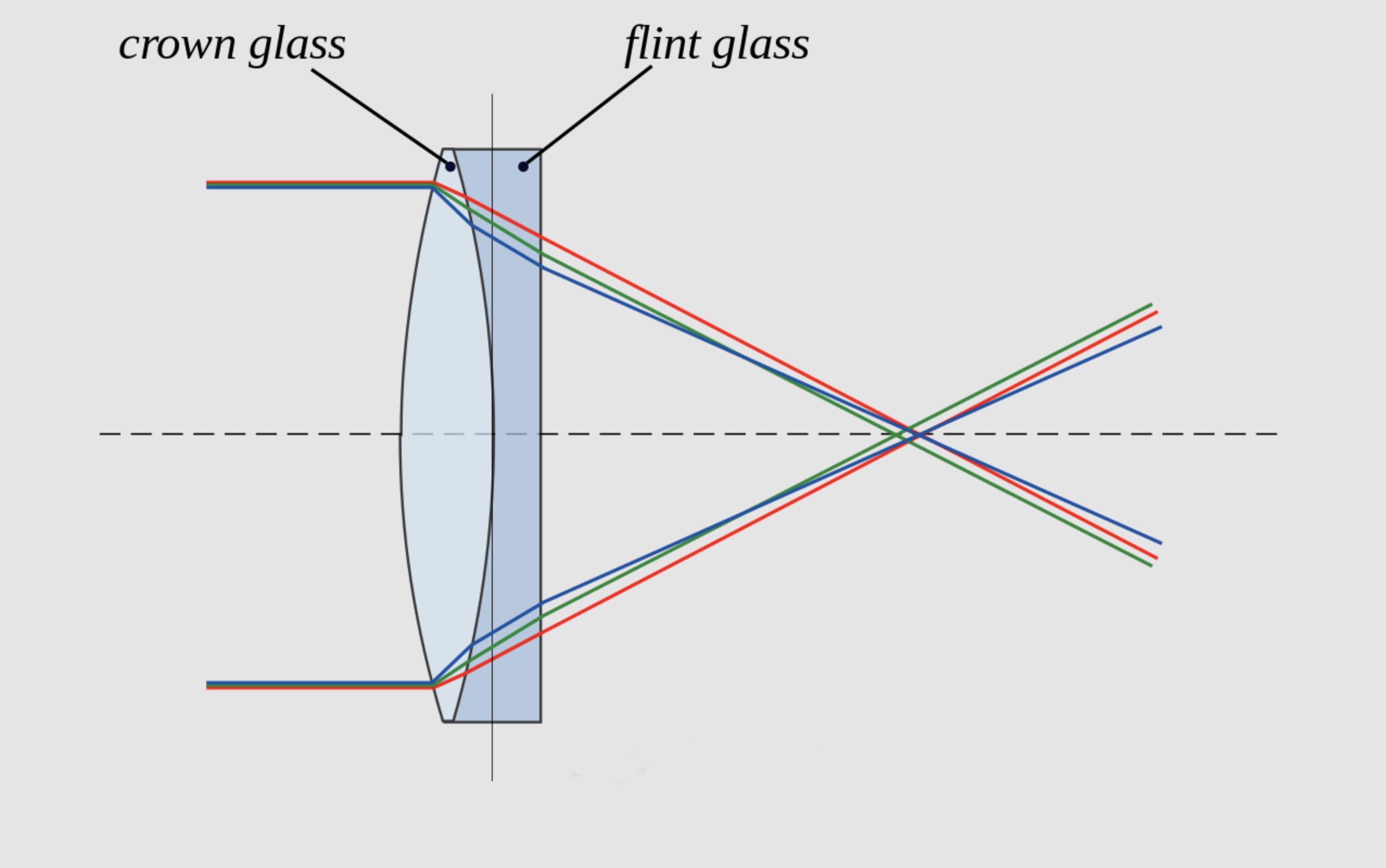
ACHROMAT consist of two pieces of glass cemented or air spaced, focusing more colors at the same place These lenses can provide excellent imagery if they have longer focal lengths.

Binoculars at tourist attractions are always mounted on ALT-AZ mounts.

Ceres is the largest ASTEROID in the Asteroid Belt. It is also the only asteroid that is spherical in shape (just like a ball).
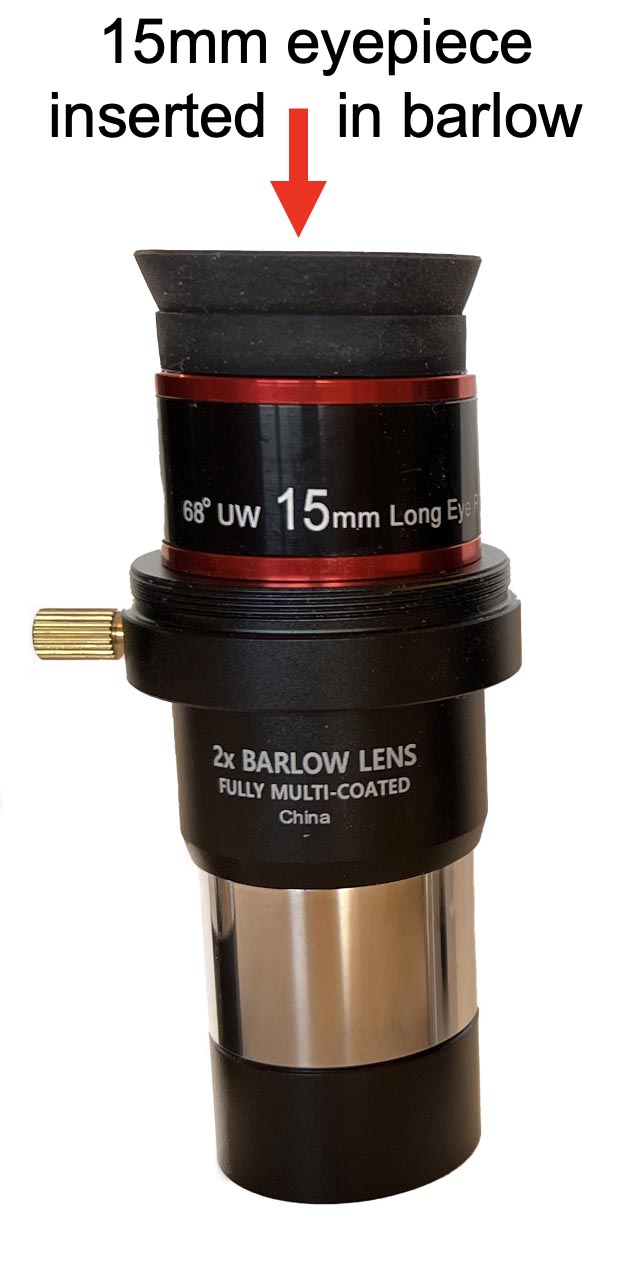
A BARLOW is used in conjunction with an individual eyepiece to double or more the magnification of the eyepiece. The eyepiece is inserted into the barlow and the barlow is inserted into the eyepiece holder or focuser.

A time lapse showing the circular path of the stars around Polaris or the North Celestial Pole. CIRCUMPOLAR stars are those that never set but always stay above the horizon.
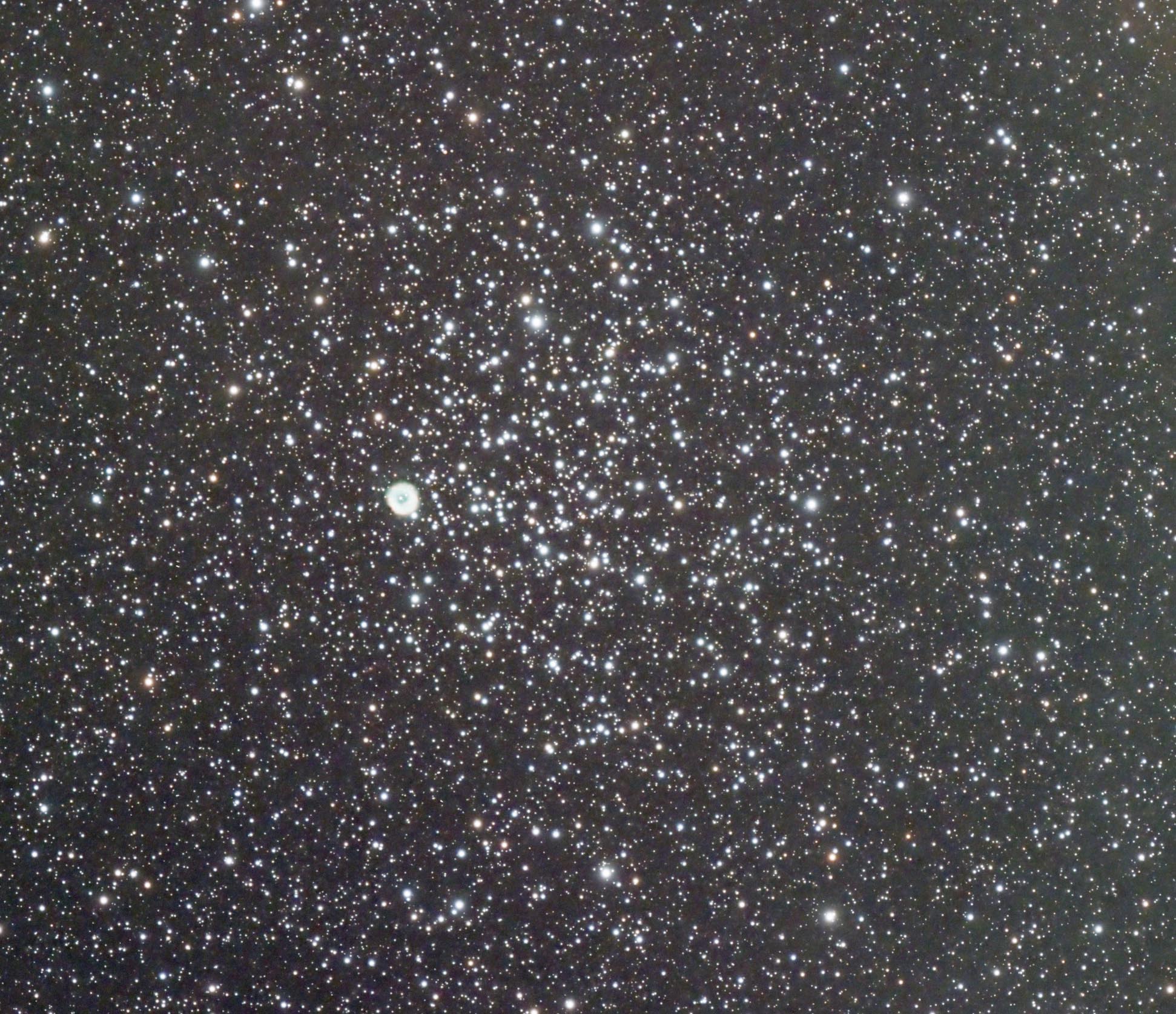
The CLUSTER or OPEN CLUSTER of stars known as M46 in Puppis. There is a small round planetary nebula at the edge of this cluster.
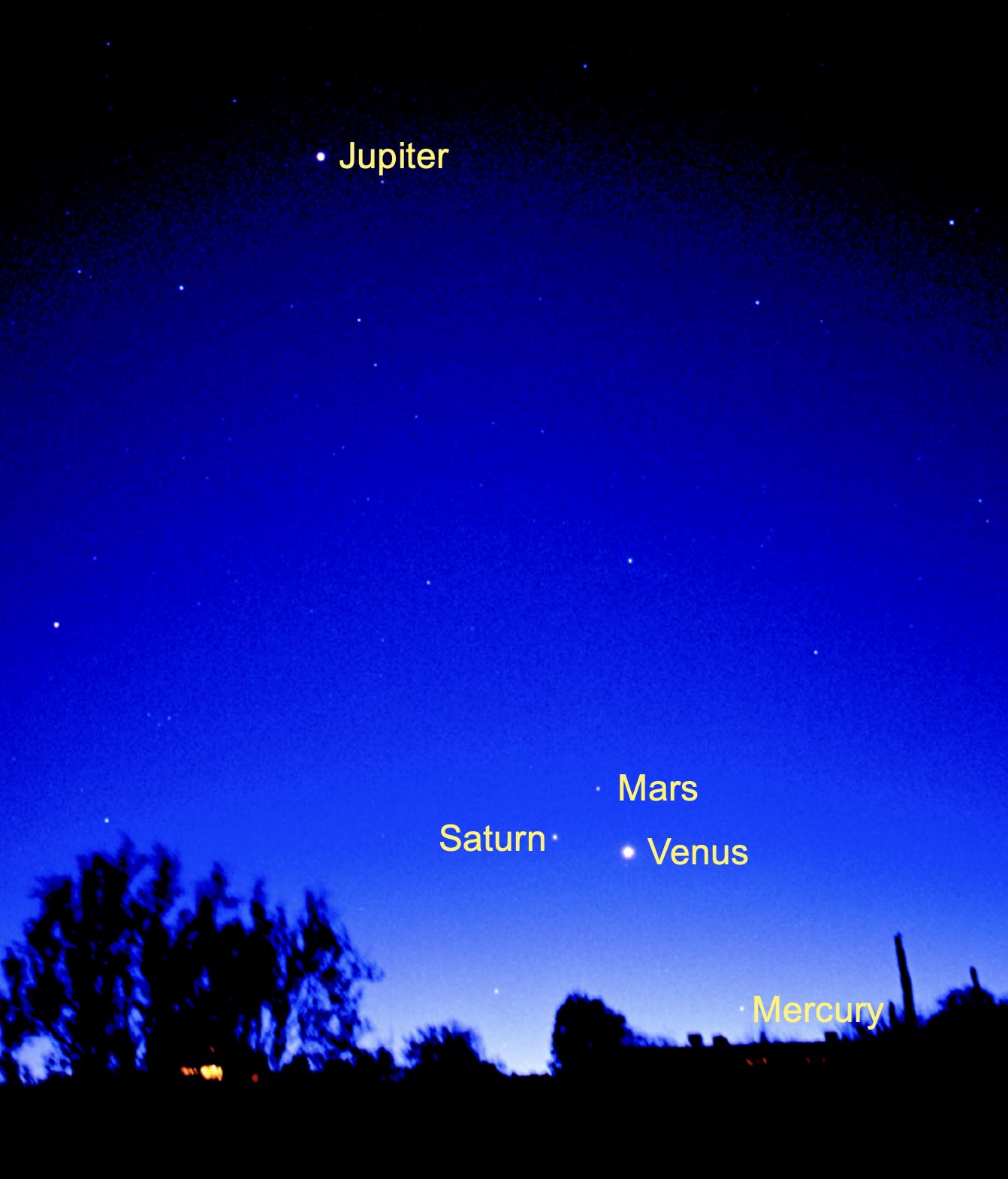
A CONJUNCTION of the five visible
planets in May 2002 captured with
an early digital camera.
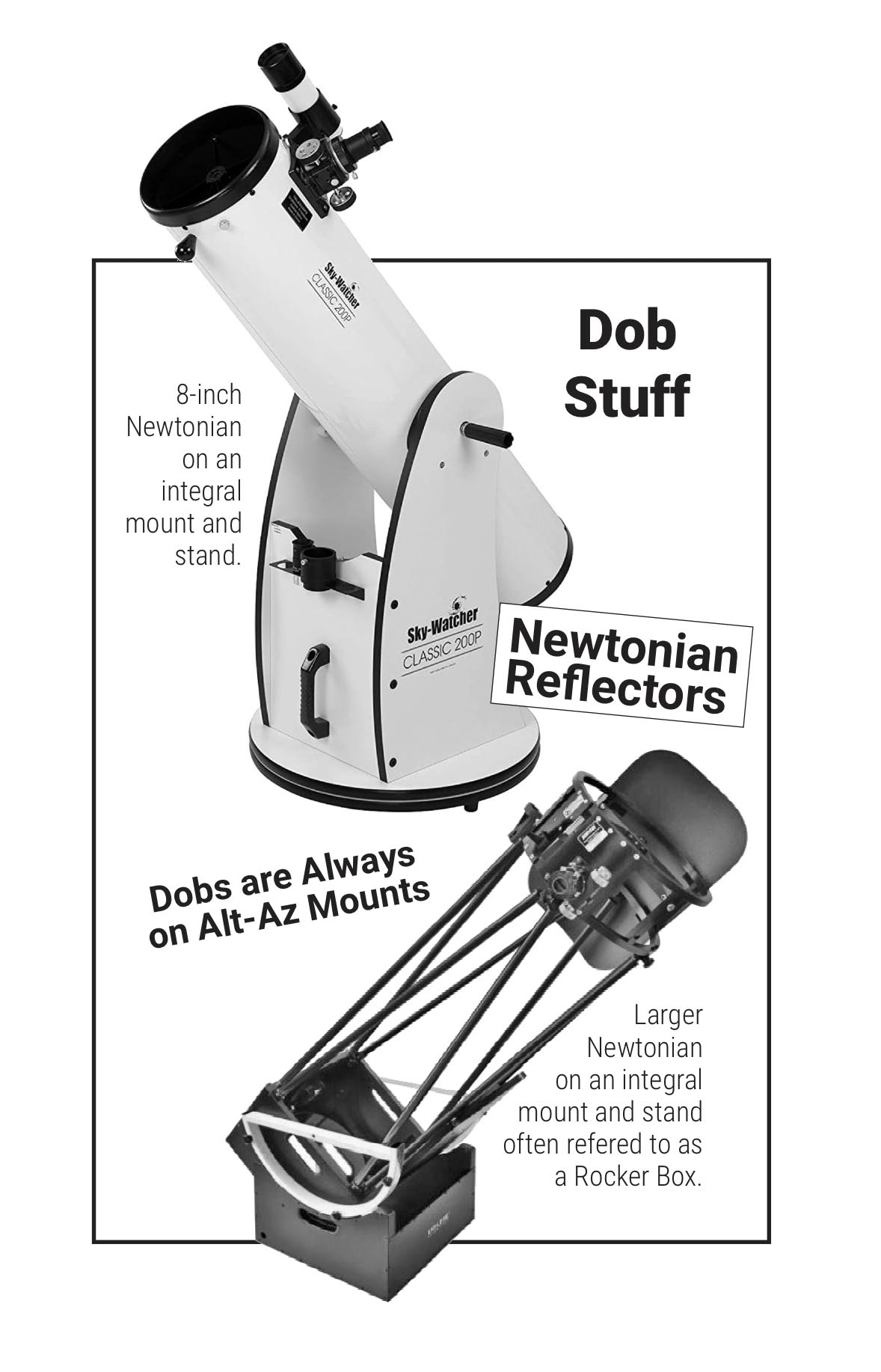
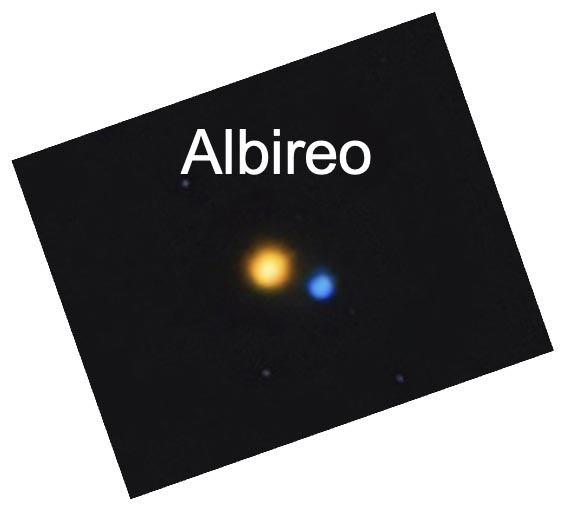
The DOUBLE STAR Albireo which is the bottom star that makes up the Northern Cross (constellation Cygnus). This is a favorite because of the contrasty blue and gold colors and is easy to see in a small telescope.
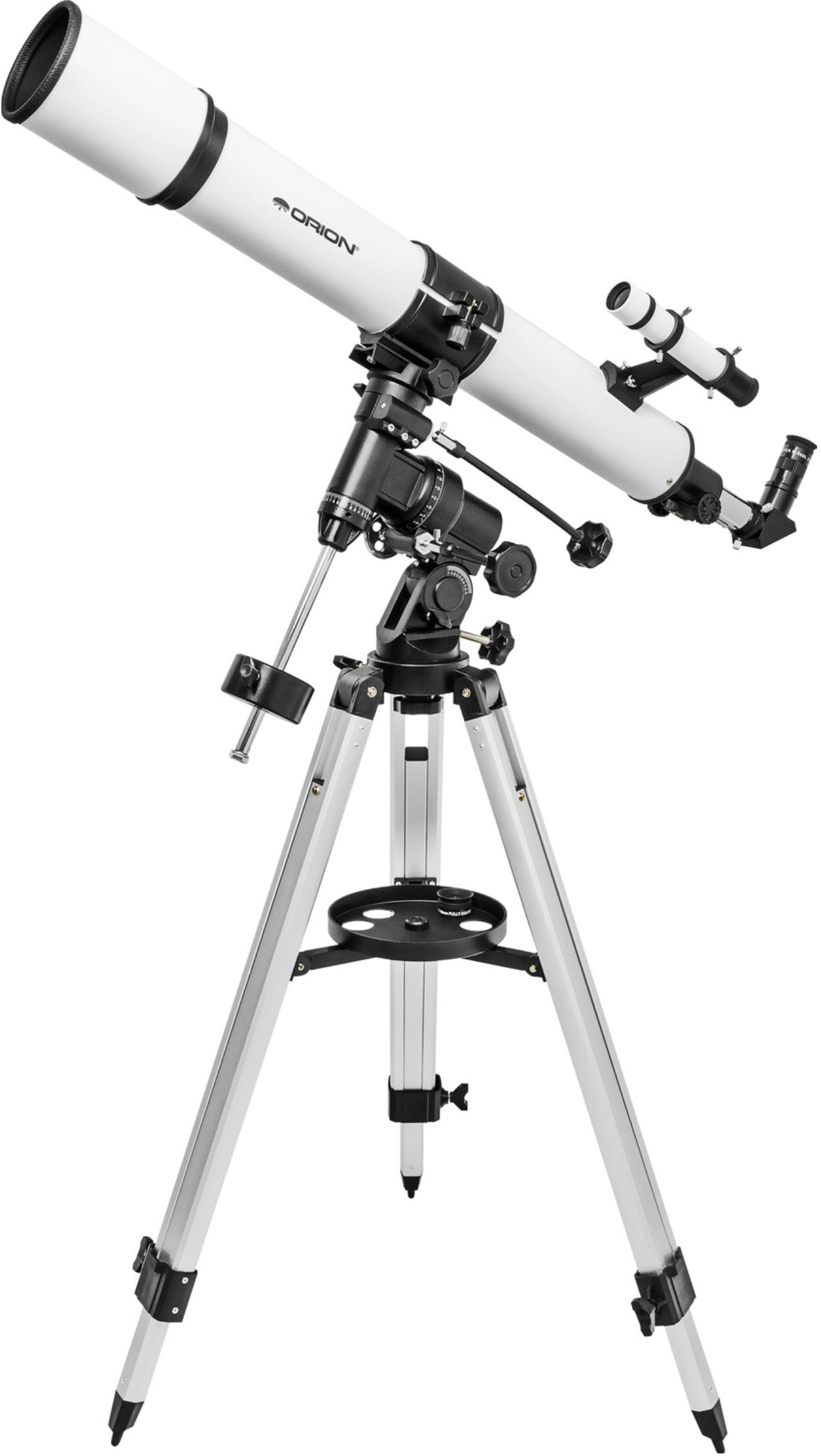
A refractor telescope on a GERMAN EQUATORIAL MOUNT (GEM) sporting a typical FINDERSCOPE, near the backend by the eyepiece, that is, a small refractor that has low magnification and a wide field-of-view.

GALAXIES
1. Spiral galaxy
2.
Barred Spiral galaxy
3. Elliptical galaxy
4. Irregular galaxy

GLOBULAR CLUSTER M22 in Sagittarius, a favorite in small telescopes.
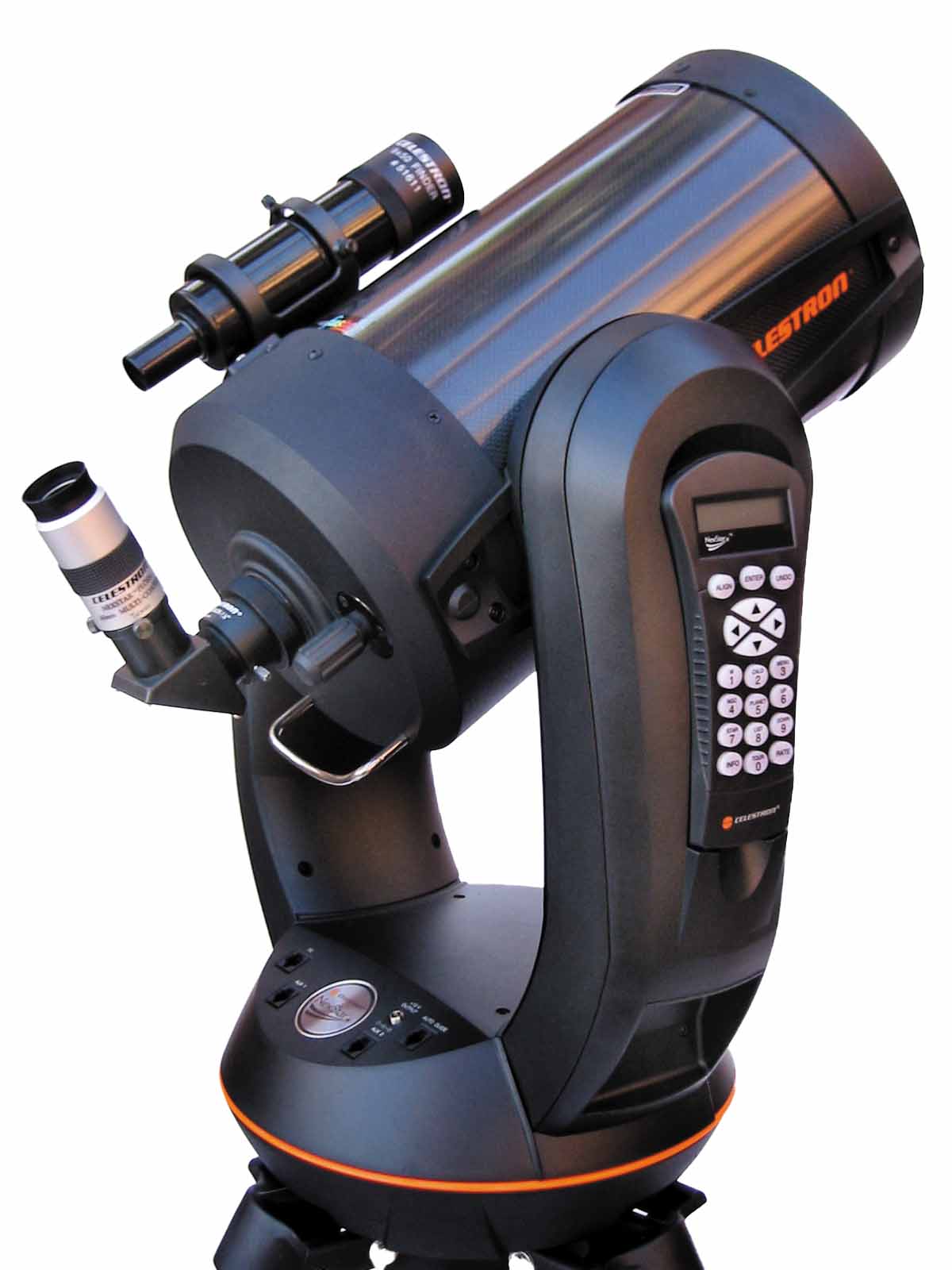
A GOTO telescope (SCT) that is motorized and computerized. It is the mount that has this ability, not the actual telescope. Once alligned to three stars, it will go to any object using the detachable keypad.
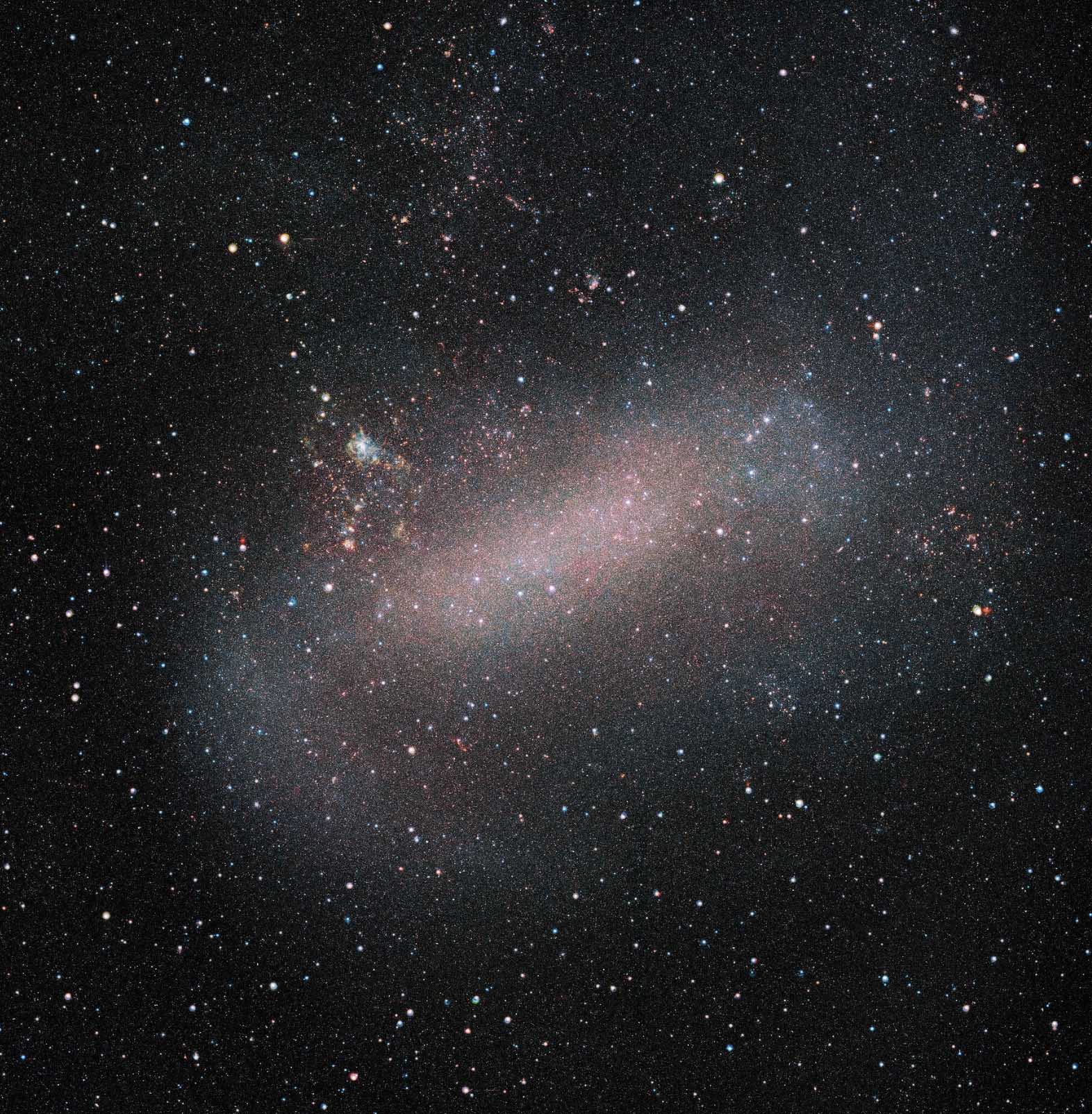
Large MAGELLANIC CLOUD that can best be seen from the Southern Hemisphere. The LMC and SMC look like detached parts of the Milky Way Band.

CHARLES MESSIER, 1730–1817 is the “father” of Deep Sky Objects.
This is a map of our
MILKY WAY GALAXY. There are no actual photos because we reside inside. Click on the image to read the names of various parts including the location of our Sun.

NEBULAE
1. Emission Nebula
2. Reflection Nebula
3. Supernova
4. Planetary Nebula
5. Dark Nebula
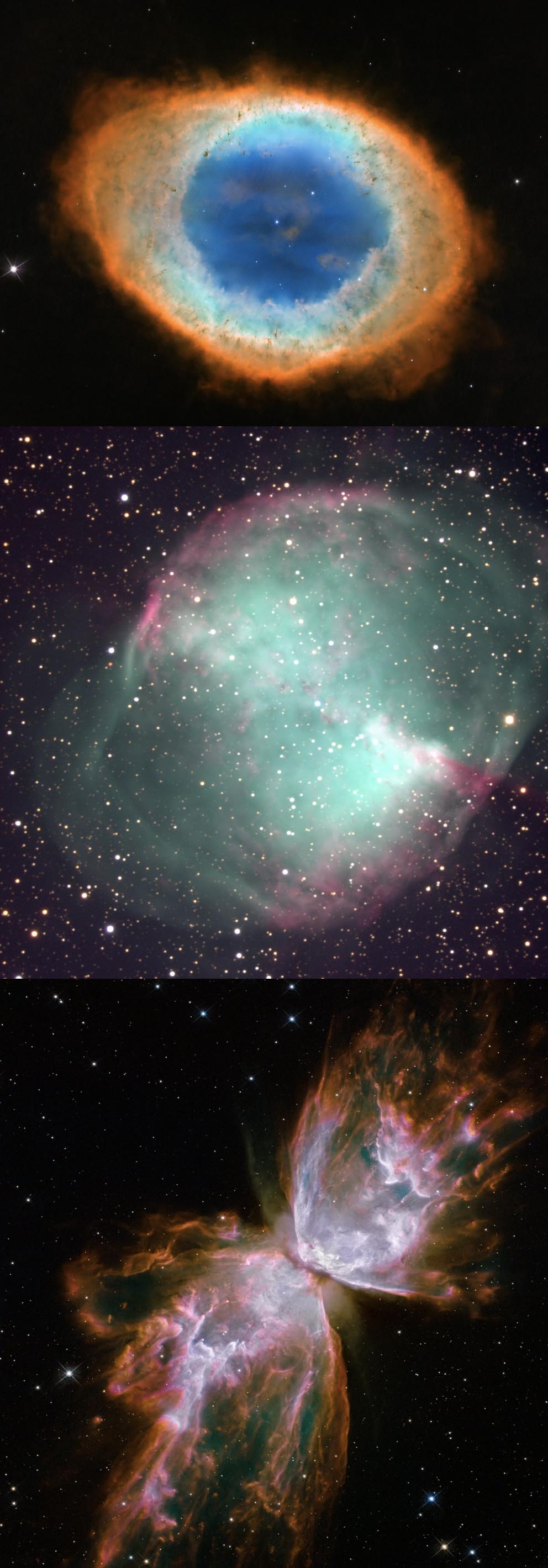
Three PLANETARY NEBULAE.
The name has nothing to do with the planets but was initially coined because many are disk like, just like our planets.
Top: M57. Middle: M27.
Bottom: NGC6302
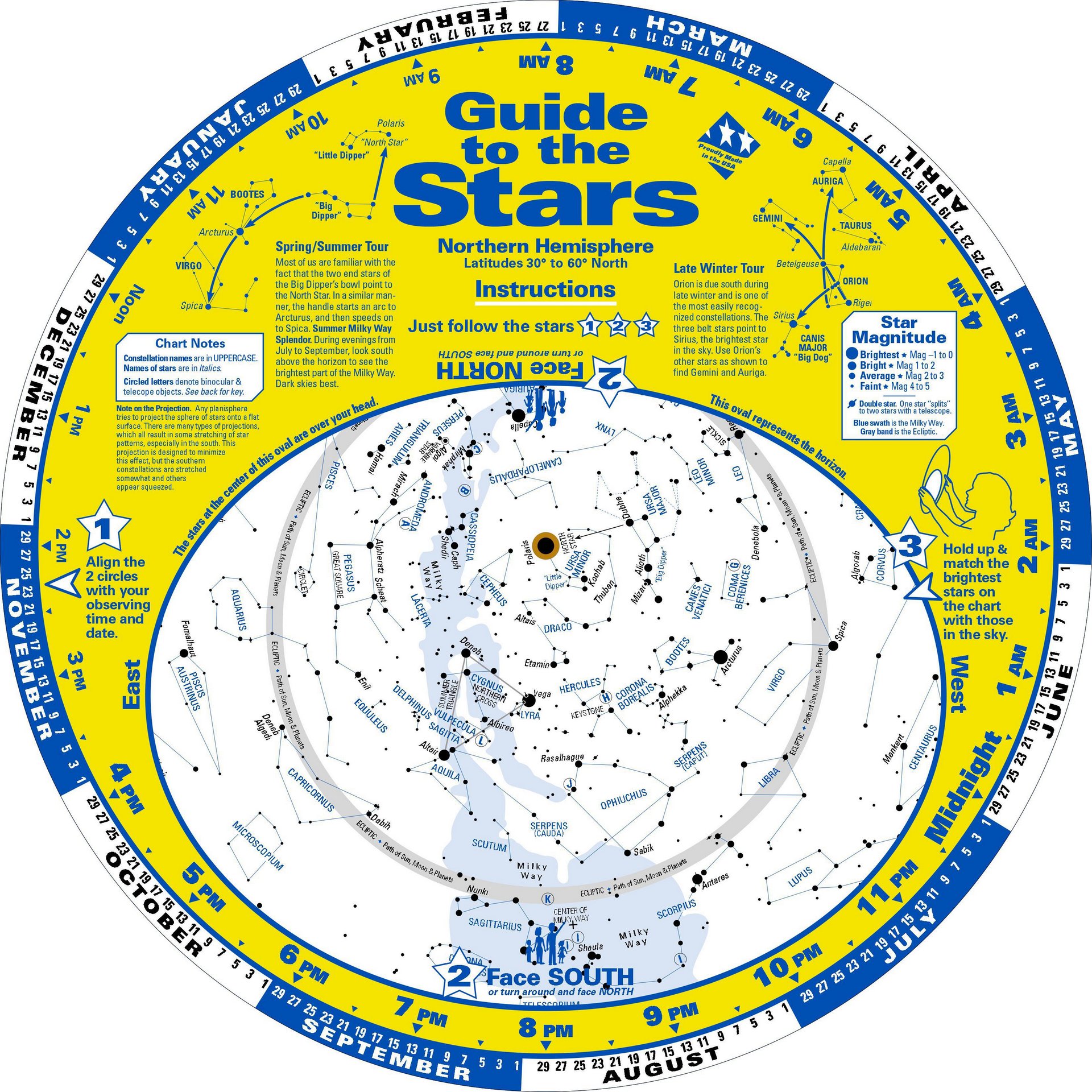
A PLANISPHERE, a star chart that plots the upsidedown bowl of the night sky onto a flat plane.

SETTING CIRCLES on an German equatorial mount (GEM). I don't know of anyone who really uses them. Ironically, you can find them on very cheap equatorial mounts.
STARS and their sizes from the planet Mercury to the very largest stars. Click on image to a larger view.
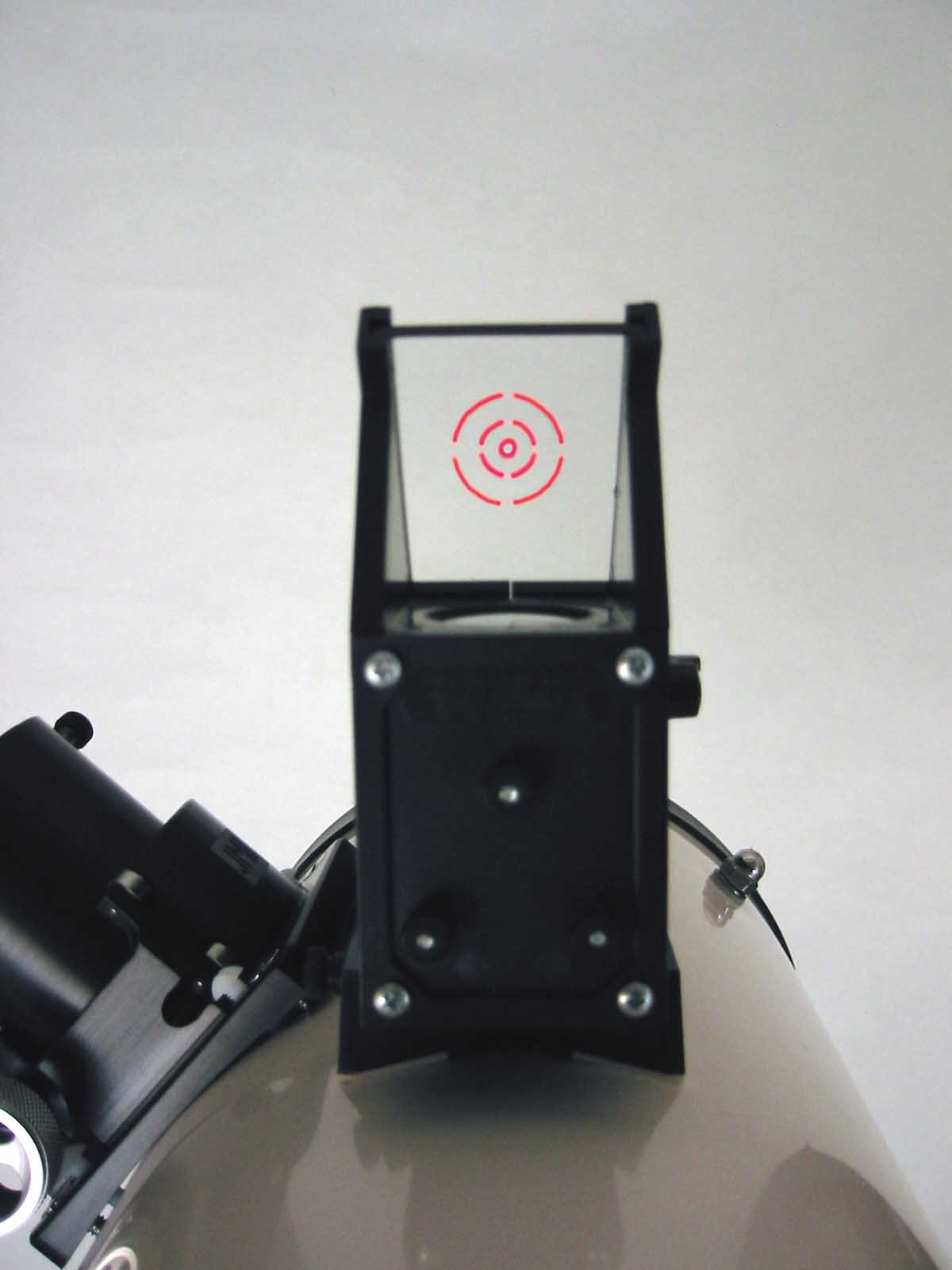
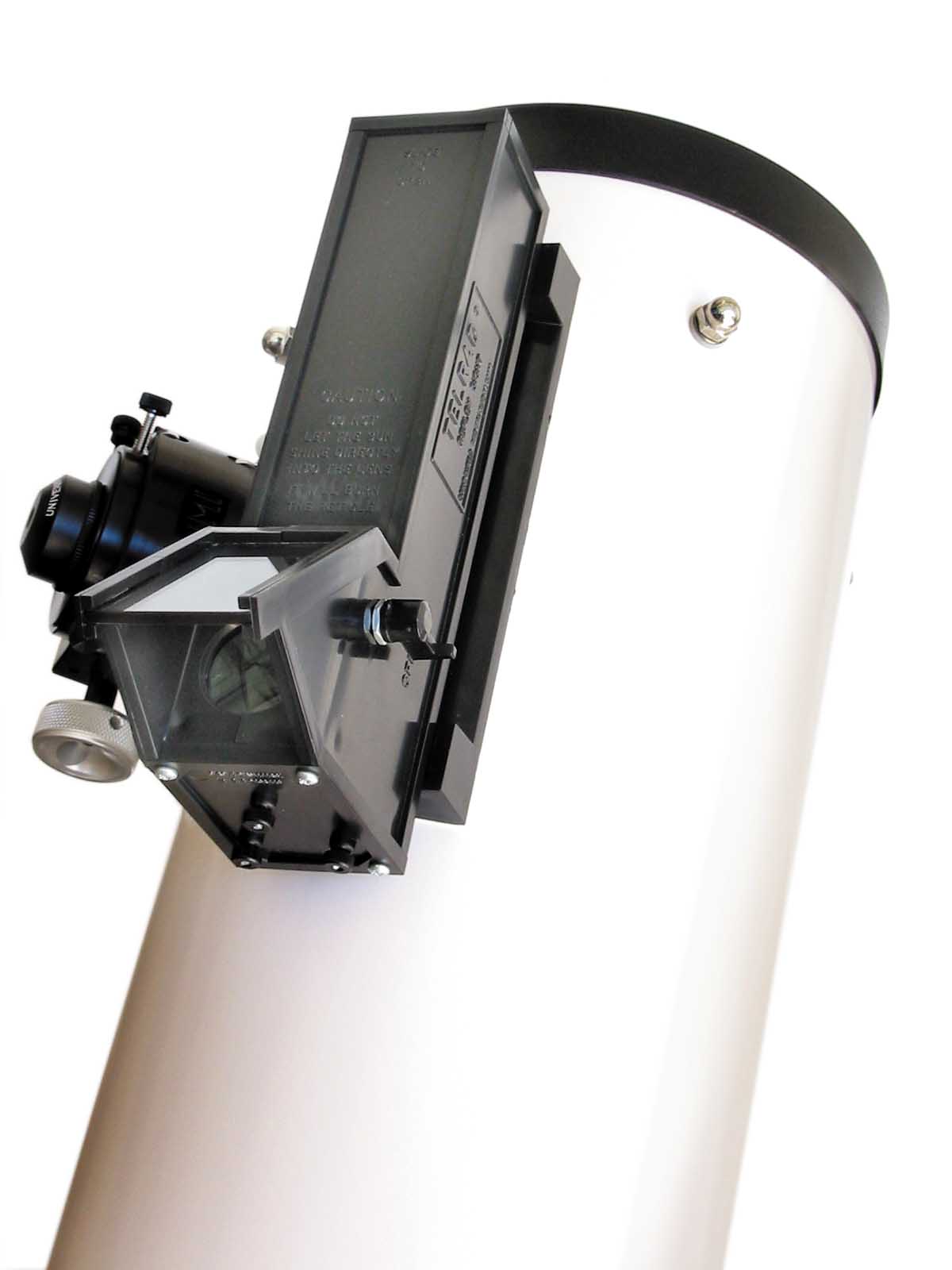
The Telrad
It is not easy to aim a telescope without some optical aid. Traditionally and still in use are little telescopes called Finderscopes that have a wide field of view and sometimes a reticle. However, these are not easy to use. Many Dobs are sold with finderscopes but most amateurs will replace them with a Telrad that provides an illuminated bullseye and no magnification—they are GREAT!

TELESCOPES
1. A few of Galileo’s telescopes. The oval ornament at the bottom houses the front lens of a scope he used to write a book about his observations.
2. Replica of Newton’s original telescope, the first reflector telescope ever made, a design still used today–the Newtonian reflector.
3. A 8-inch early Schmidt-Cassegrain Telescope by Celestron, the inventor of the modern SCT.
4. A 3.5 inch Maksutov-Cassagrain telescope called a Questar, a favorite of the 1960s and 70s
(was very expensive).